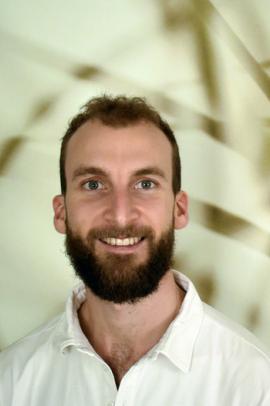Managing pain with the power of the mind

Vidyamala Burch is helping people in pain through the practice of "mindfulness", the act of paying more attention to the present moment. But it took her many years to discover it for herself first.
When people are having serious difficulties, it can bring out the extreme sides of people's personalities, says Vidyamala Burch, a 55-year-old pain management practitioner based in Manchester. "One is the denial, pushy, driven side and the other is the more passive, overwhelmed, depressive side."
Burch lives with chronic pain having acquired two spinal injuries at an early age. The first happened at 16 when she lifted somebody from a swimming pool during water safety practice. The second was the result of a car accident five years later.
Subsequent surgery and years of wear and tear have added to her toll. "I've got a paralysed bowel, a paralysed bladder and my walking is impaired," she says. She admits she dealt with it all very badly in the early days, pushed herself too much and ignored her extra needs.
As a result, her body had a physical breakdown at the age of 25, and she found herself in intensive care. Whilst there, an Anglican chaplain led her through a meditation which changed her way of thinking. "I had a real ah-ha moment," she says. "I thought wow, I have a mind that can help me manage my situation."
A lengthy period of rehabilitation followed in which she tried many different relaxation techniques. Three years later, she found that one, called Mindful Meditation, worked well for her.
Now more widely known as mindfulness, it can be described as the act of focusing on the present moment, acknowledging thoughts, feelings and physical sensations. It is thousands of years old and Buddhist in origin, but has become popular as a therapy in the West in recent years.
Though perhaps most commonly associated with tackling mental health difficulties, and strongly promoted by the NHS for this, one of its first applications in this part of the world was to help with pain.
Burch says that when you have severe discomfort, there's a "rising up" in your body that exclaims "this hurts and I don't like it".
"The intuitive response is to turn away from it and try and get on with life in spite of your pain," she says. "With mindfulness, what we do is we turn towards it, to investigate what is actually happening in each moment."
In 2000, now ordained as a Buddhist, she found herself struggling to find paid work which she could physically manage. The idea occurred to her that she might be able to help others with pain on a professional basis.
She started a social enterprise called Breathworks where people with chronic pain take an eight-week course to learn how mindfulness could help them cope better with their physical symptoms.
Burch says some of her students were able to get back to work after a lengthy period of unemployment following the course. Others say that their sleep has been transformed.
The programme has been taught to thousands of participants, in over 20 countries.

Sophie Matthew, who has the arthritis-like condition ankylosing spondylitis, says that mindfulness has transformed her life.
"Mindfulness has helped me halve my intake of painkillers and I'm in a lot less pain than I used to be," she says. "My condition is chronic and incurable so I used to get into a real state worrying about it. I used to suffer from terrible exhaustion too. It was so bad that sometimes I simply couldn't get out of bed in the morning."
Burch is now a leader in this area and her company also trains practitioners. She sits on an all-party parliamentary group to incorporate mindfulness meditation into the NHS.
From stress reduction to pregnancy and birth treatments, mindfulness programmes can be quite similar. But she says there are "subtle but important" aspects of her pain relief course which set it apart.
The centre is called Breathworks because of the focus on breathing. She teaches students to acknowledge the tension which is causing pain and to "breathe into it", which she says reduces impact on the body.
Though it's common to find movement and exercise on other courses, Burch says that it might be "inappropriate" when working with people who are in pain.
"We have adapted the 'mindful movement' so that the primary emphasis is on being aware as you move, rather than how far you can move," she says.
"You go to open a door, you've got discomfort, you tense against that movement and your pain will get worse."
 Vidyamala Burch says practising mindfulness can help with daily pain
Vidyamala Burch says practising mindfulness can help with daily painBurch says her methods for pain also differ from others by focusing more on daily living.
Through practising mindfulness in her own daily life, she has discovered how much time she can sit at her computer without a flare-up - "I wrote both of my books in bursts of 20 minutes," she says.
"People with chronic pain tend to live in a boom-and-bust cycle where on a good day, you really go for it. Then you have a big flare-up as a consequence."
She calls this the "over-activity, under-activity" cycle.
"We get people to keep diaries of all their activities for one week, noting down what causes their pain to flare-up and what doesn't, and which ones improve the pain."
Compassion and kindness are a big part of the process and lots of people reportedly blame themselves for their difficulties. But some conditions you have to learn to live with because they aren't going to disappear no matter how determined a person is, or how strong the drugs are.
"There's something very beautiful about learning to walk beside whatever difficulty you've got, with dignity, acceptance and grace," says Burch.
"The fighting language in our culture around beating cancer or doing something in spite of a disability says that we should be able to overcome everything," she says.
"The consumerist culture says that there should be something out there that will make me better. But if you're living with a chronic condition, you might not get better."
- Log in to post comments






















